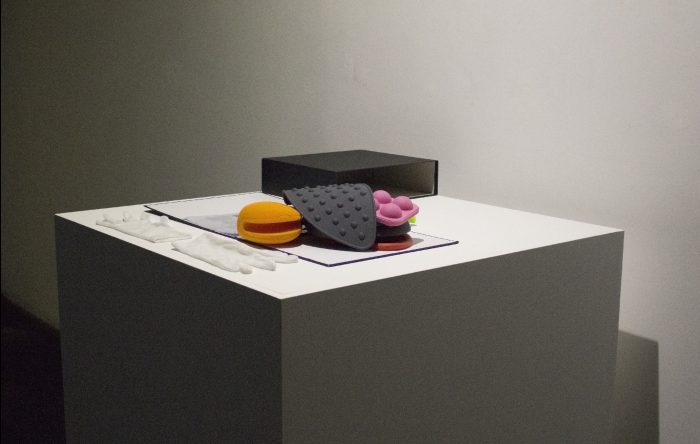Bringing together six Skopje-born artists: Verica Kovacevska, Igor Toshevski, the collaborative duos OPA (Obsessive Possessive Aggression) and Ephemerki, Captured State brings Macedonian art to Scotland. Bridging the fields of performance, documentation, mockumentaries, video and installation, the works’ political charge is instantly tangible.
Upon entering the room, it becomes apparent that the artworks are informed by the societal conditions and political upheavals experienced within the former-Yugoslav context. Within this show, Ephemerki’s work references their performance Contexter vs. Discoursor (2015), which examines the power of objects and the manipulation of language. Displayed alongside a video installation within Captured State, these objects act as a document and physical trace of Ephemerki’s previous performance. Although the objects sit untouched within the room at Summerhall and appear simply as items from the everyday, through the inferred presence of the collaborative duo the items transcend their position of mere objecthood to instead be activated by the social space in which Ephemerki operate.
OPA similarly adopt a social position in the realisation of their work, paying close attention to the ways in which individuals and communities think and behave. OPA are particularly interested in the life of an artist, the challenges they face and the complexities of the art system. By employing materials as their mode of questioning, they force the viewer into a state of contemplation. Within Captured State, OPA’s use of language is fundamental, with film extracts posing questions such as “who says being rich and famous is most important?”, as well as a looped film of a dishevelled flag flying, titled I Will Not Make Any More Political Art. Language, symbols, colour and history scatter the room and speak to the viewer.
More participatory works invite the viewer to sit and listen intimately using headphones, through which Verica Kovacevska recites the story of housing destruction following the devastating earthquake in Macedonia during 1963. Although the exhibition is relatively minimal in terms of layout, with performance documentation pinned tenderly to the walls and a suitcase containing political-like flyers occupying a corner of the room, themes within the show leave the viewer in contemplation long after they have left the gallery behind. The historical investigation and geopolitical dimensions of the works furthers this sense of rumination, taking the viewer beyond the field of art.
